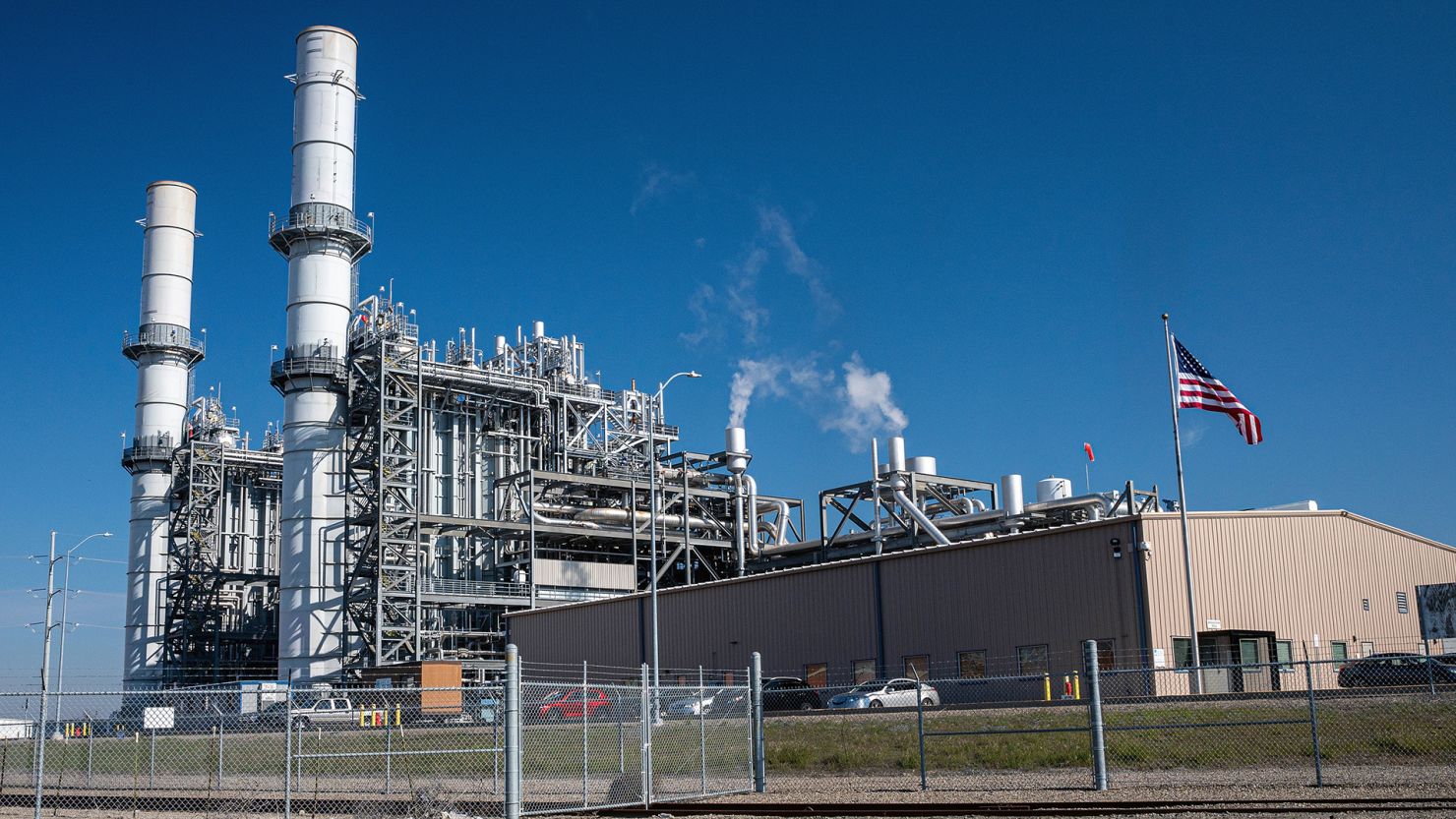The Biden administration is planning to roll out aggressive new rules to regulate planet-warming pollution from natural gas power plants, three sources familiar with the plan and who have been briefed on the rules told CNN, in a move that could face fierce legal challenges.
President Joe Biden’s Environmental Protection Agency has been exploring ways to tighten the rules for not just new power plants that will run on natural gas, but existing plants too, the sources said. According to the sources, the rules would be more stringent than previously planned regulations, which aimed to control pollution from new natural gas power plants and would have effectively grandfathered existing plants into older rules.
The EPA’s new strategy on power plants has gained traction in the administration in the past few weeks, one source said, amid intense pressure from environmental groups.
The Biden administration frustrated those groups – and young, climate-minded voters – when it approved the controversial Willow oil drilling project in Alaska in March. Since then, the administration has put forward an ambitious vehicle tailpipe rule that could revolutionize the car market in the US and see electric vehicles making up two-thirds of new car sales by 2032.
Importantly for the forthcoming power plant regulations, the electricity sector generates a quarter of all planet-warming pollution in the US, according to the EPA, and slashing that pollution quickly is key for the country to achieve net-zero climate emissions by 2050, as Biden has pledged to do.
The EPA did not comment on the details of the plan, noting that they were still under review. But EPA spokesperson Tim Carroll told CNN that the agency is “moving urgently to advance standards that protect people and the planet, building on the momentum from President Biden’s Investing in America economic agenda, including proposals to address carbon emissions from new and existing power plants.”
“Once the interagency review process is completed, EPA looks forward to sharing more information with stakeholders and the public,” Carroll said.
A source familiar with the plan said the rules show the EPA and Biden administration “appear to have fully learned the lessons of the Clean Power Plan.” During the Obama administration, the EPA put forward a broad-reaching power-plant rule that the US Supreme Court later threw out. The Biden administration is now trying to balance strengthening the country’s pollution standards with regulations that can stand up to further legal challenges from Republican-led states and the fossil fuel industry.
“This is not an exercise in policy creativity, as much as climate advocates would like them to be,” the source said. “That’s not what these rules are going to be.”
Massive amounts of funding for clean energy in the Inflation Reduction Act was a factor that helped push the administration toward the stronger rules. But it could spur concerns around the reliability of the electrical grid – especially as the Biden administration and automobile makers move aggressively toward electric vehicles.
Democratic Sen. Joe Manchin, who represents coal-heavy West Virginia and who was the one of the lead authors of the Inflation Reduction Act, has voiced concerns about retiring coal-fired power plants.
The rules, which could be announced as early as Thursday, are among the most highly watched forthcoming actions from the EPA, after the Supreme Court curbed the agency’s ability to regulate emissions from power plants last year.
The Supreme Court ruling said the EPA does have some authority to regulate planet-warming carbon dioxide emissions, but it limited the ways the agency could do so, saying it has the authority to regulate power plants’ activities inside their fence lines – with things such as carbon-capture systems – but couldn’t force them to transition to cleaner sources of energy.
However, rules enforcing things such as carbon capture could ultimately encourage power plants to transition to renewable energy like wind and solar. Carbon capture technology is still quite expensive, and some utilities have chosen to shut down older, coal-fired power plants rather than outfitting them with the pricey equipment.
Still, the EPA rules on existing and new natural gas plants are significant, since many utilities that are shutting down their coal plants are replacing them with natural gas.
It is not yet clear whether the EPA will propose outfitting natural gas plants with carbon capture or similar, pollution-reducing technology.



